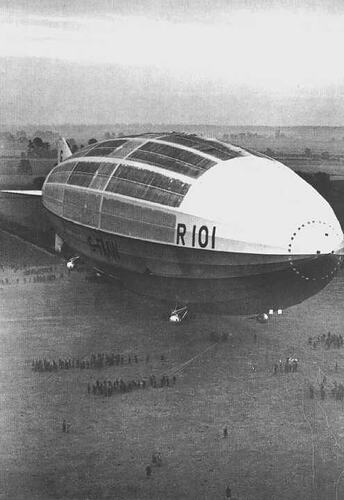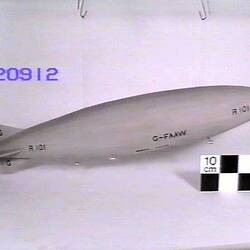The rigid airship R101 was built at the Royal Airship Works, Cardington, Bedfordshire, UK from 1928-29. Power was provided by five Beardmore 'Tornado' Mark III liquid-cooled engines rated at 585 horsepower per engine. Lifting capacity of 169.85 tons was achieved with 5.5 million cubic feet of hydrogen gas in separate envelopes. Total length of the R101 was 777 feet. At the time of her completion, R101 was the largest ever British airship. The R100, an airship of similar size, was built by Vickers Ltd around this time.
Trials of R101 revealed a lack of adequate lift for commercial use and the airship was then cut in two to have more gas capacity installed. It was intended that the R101 would operate passenger flights to and from British Empire countries, particularly India. A service to Australia was also planned.
The problems plaguing the design were not resolved when R101 set out on her maiden flight to India. VIP passengers included UK Secretary of State for Air, Lord Thomson and the UK Director-General of Civil Aviation, Sir Sefton Brancker. On 5 October 1930, R101 crashed at Beauvais, France, during a storm, resulting in the loss of 48 of the 54 persons aboard. Along with Thomson and Brancker, one of those killed was RAAF Squadron Leader William Palstra MC, an Australian liaison officer in London. Palstra was a respected officer and was widely considered to be a future senior leader of the RAAF. The crash brought an early end to plans for an Imperial airship service.
More Information
-
Keywords
-
Localities
-
Authors
-
Article types

